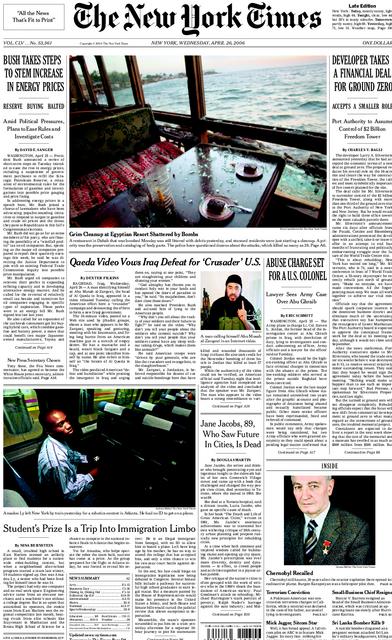Road Trip: JANE JACOBS AND THE FUTURE OF NEW YORK
From email:
JANE JACOBS AND THE FUTURE OF NEW YORK
The Municipal Art Society of New York is delighted to present an interactive exhibit that highlights the relevance of activist and author Jane Jacobs and the urban-design principles introduced in her classic text The Death and Life of Great American Cities, which had an immediate impact on how cities are designed and used. Though raised in a small town and lacking the credentials of a trained planner, Jacobs quickly became one of the century’s most influential writers on urban planning. With the support of the Rockefeller Foundation, Jacobs described a “ballet of the sidewalks,” an unrehearsed choreography of urban dwellers going about their business that, in her view, created the vitality of city life.
The exhibit highlights the context in which Jacobs wrote The Death and Life of Great American Cities, while also illustrating the role of Jane Jacobs’s ideas in today’s New York. The exhibit is designed to prompt visitors to view the city through Jane Jacobs’s eyes and to empower them to take a more active role in advocating for a more livable city.
“The project presents the principles and activism of Jane Jacobs and challenges New York City residents to study the use of their city, its streets and the built environment,” said Judith Rodin, president of the Rockefeller Foundation. “The project inspires citizens to support and fight for the health of their own neighborhoods, and it encourages city officials, developers, planners and architects to embrace and implement Jane Jacobs’s teachings.”
“Jane Jacobs and the Future of New York highlights an approach to urban theory and planning that remains powerfully relevant in a city that is experiencing an unprecedented influx of wealth and development,” said Kent Barwick, president of the Municipal Art Society. “We hope that this effort informs the development process and energizes a new breed of activist.”
The interactive exhibit explores contemporary New York through Jacobs’s groundbreaking views on the elements of a healthy city, the value of small blocks, the importance of civic activism, and the benefits of a diverse and dynamic neighborhood. It also encourages visitors to become more involved in their own neighborhoods.
The exhibit is part of a larger Jane Jacobs initiative that includes panel discussions, walking tours, school programs, a student internship program, a sustainability and livability project in the Flatbush neighborhood of Brooklyn, and the publication of Block by Block, a collection of essays that elaborate on Jacobs’s relevance today.
Click here for more information about panel discussions, walking tours and school programs.
The exhibit will be on view at the Municipal Art Society’s Urban Center galleries at 457 Madison Avenue (at 51st Street) in New York City, from Sept. 25, 2007, through January 5, 2008.
During the exhibit, gallery hours will be extended to 10:00 a.m. to 6:00 p.m. on Mondays, Tuesdays, Fridays, and Saturdays, 10:00 a.m. to 8:00 p.m. on Wednesdays, and 11:00 a.m. to 5:00 p.m. on Sundays.

Jane Jacobs death made the front page of the New York Times. (Not the Washington Post.)



0 Comments:
Post a Comment
<< Home